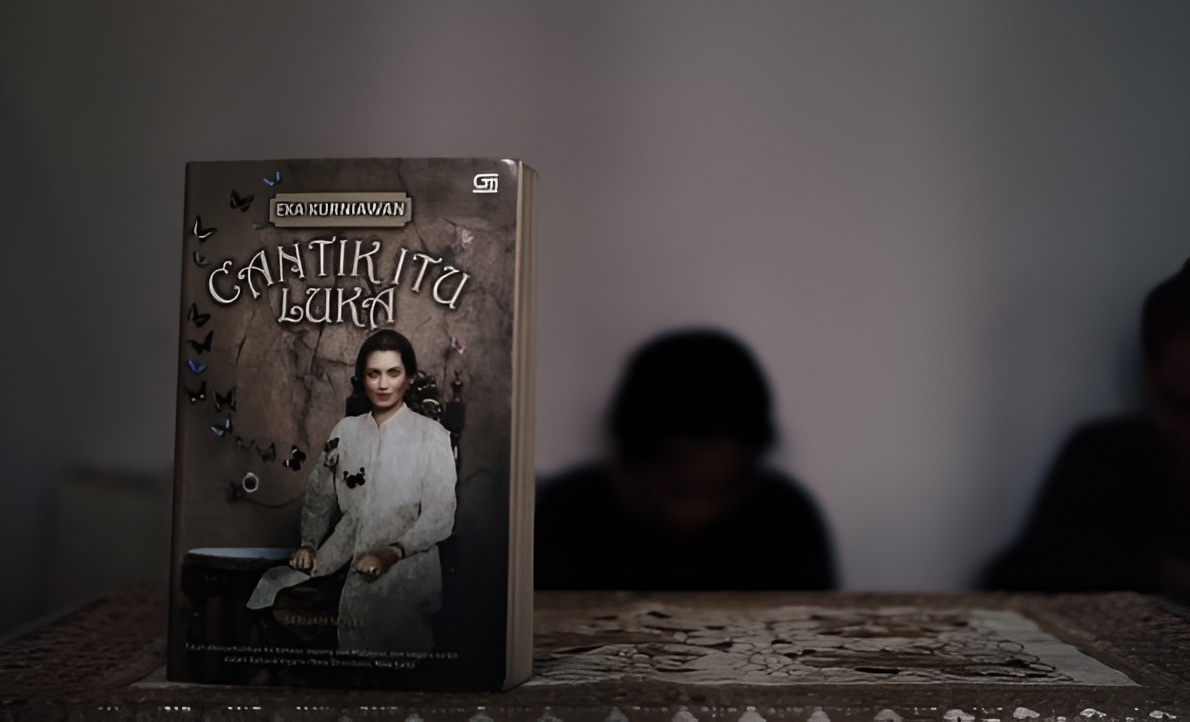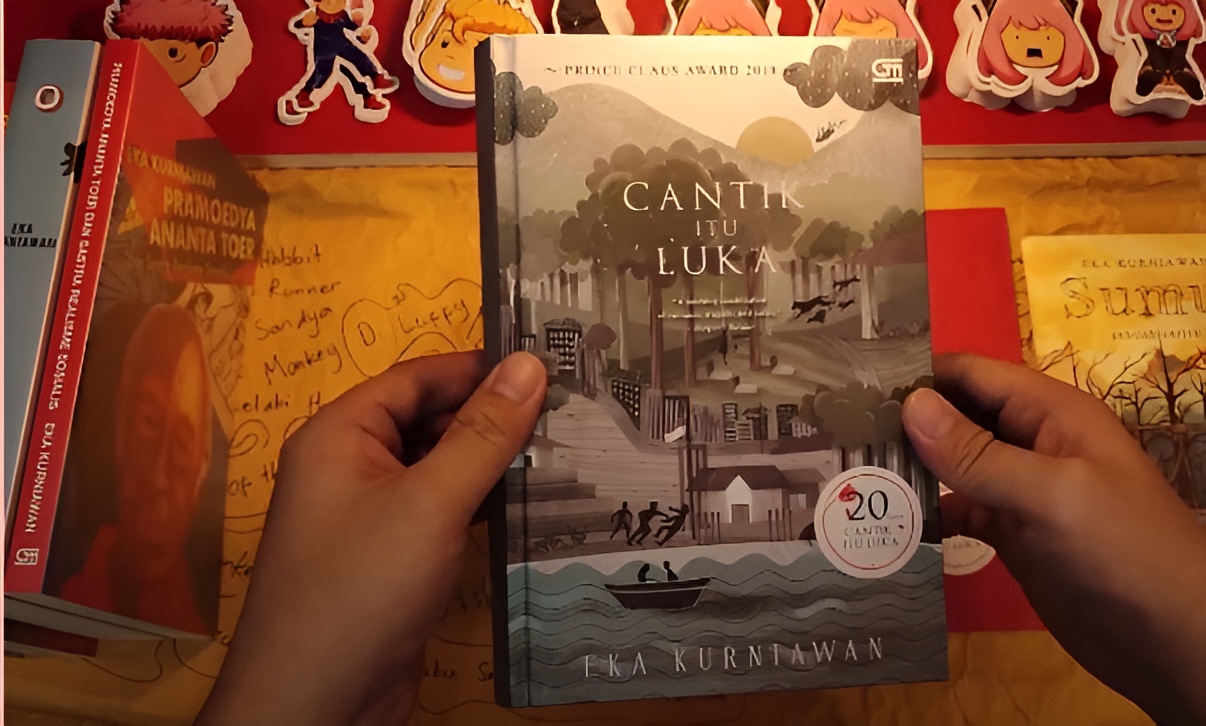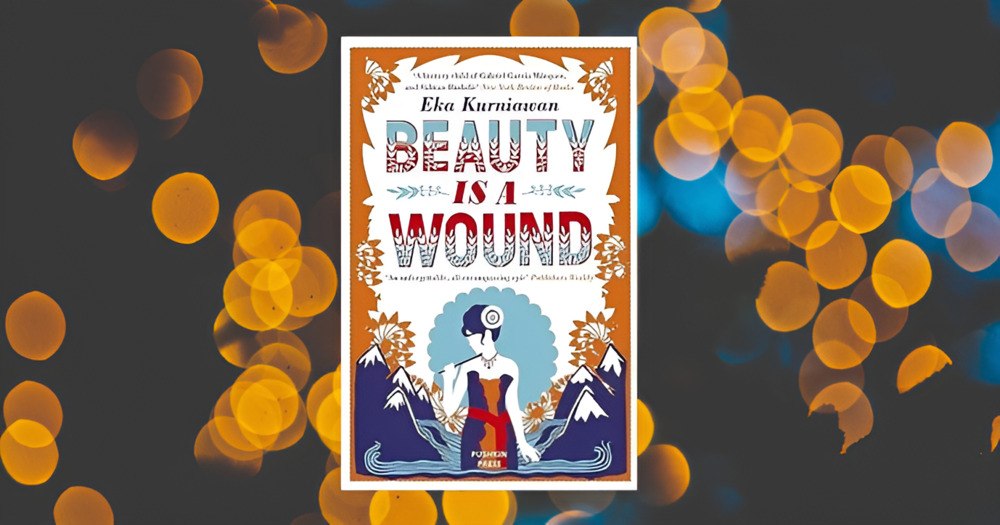
Exploring the Art of Novel Translation: Cantik itu Luka into Beauty is A Wound
Indonesian readers are getting more used to translated books from English to Indonesian, as the appetite for high-quality reading materials is increasing over time, especially when it comes to international bestsellers. Nevertheless, critiques are abound regarding some translators who are unable to accurately translate subtle meanings, which influences how readers perceive the content.
Translating Indonesian literature into English might offer a different viewpoint. Few Indonesian national bestsellers have been translated into languages such as English. One notable exception is Eka Kurniawan's "Beauty is a Wound", which has been translated into 30 languages.
The novel's English translation by Annie Tucker (a translator from Los Angeles) has been celebrated by Literary Hub as one of the decade's best novel translations. Emily Firetog, the deputy editor at Literary Hub, in her list of the “10 Best Translated Novels of the Decade,” commended Tucker’s translation of "Beauty is a Wound" for reinforcing the author's unique literary voice and intentions without losing the novel’s essence. How does the translator interpret and modify the gender and cultural ideologies from the original text into the translated version? Let's explore this through the review in this article!
About Cantik Itu Luka a.k.a Beauty is A Wound

"Cantik Itu Luka" is the original title of "Beauty is a Wound," a novel by Eka Kurniawan from West Java, Indonesia. Eka Kurniawan has gained international recognition through this work. Eka Kurniawan's imaginative storytelling and meticulous execution led "Cantik Itu Luka" to capture the World Reader’s Award 2016 in Hong Kong. Initially released in 2002 with the collaboration of the Academy of Culture of Yogyakarta and Jendela Publishers, it saw a reprint in 2015 by PT. Gramedia Pustaka Utama, spanning 481 pages.
Los Angeles-based translator Annie Tucker translated the novel into English, titled "Beauty is a Wound." Specializing in Indonesian culture, arts, and literature, Tucker earned a Ph.D. from UCLA and received the PEN/Heim Translation Fund for her work on this book.
Her contributions include writings and novel translations for various outlets and organizations like The New York Times, ethnographic film producers, independent curators, and private art galleries. New Directions published "Beauty is a Wound" in 2015, which includes 470 pages, with hyperbolic voices effectively revived with great energy, yet in a language style and nuances that uniquely belong to Eka Kurniawan.
"Beauty is a Wound" unfolds from the early periods of World War II to the Suharto presidency, focusing on Dewi Ayu, a local prostitute who inexplicably comes back to life after 21 years of being deceased. Dewi, whose ancestry includes a Dutch East India Company trader, was confined in a Japanese internment camp at the onset of the war. The narrative follows her endeavors to survive as the camp's "most beautiful prostitute" and her life after Indonesia gained independence.
The character Dewi Ayu showcases gender roles prominently throughout the novel, which also portrays Indonesia's history during its postcolonial period. Gender and culture play significant roles in this story, offering a layer of depth considering the different gender perspectives of the author and the translator, which might affect the transition from Indonesian to English.
Why is The Novel "Cinta Itu Luka" Captivating to Translate?

According to Tucker, "Beauty is a Wound" is considered a novel that urgently needs translation for several reasons:
Political Yet Easy to Read
Primarily, this novel is reader-friendly, weaving together history, satire, legend, humor, and romance into an expansive mosaic. It also delves deeply into political issues. The plot centers around Dewi Ayu, an attractive Indo prostitute, and her four daughters, spanning tales of bestiality, incest, rape, murder, madness, malevolence, and often revenge-driven undead.
Hyperbolic Without Being Naive
Its pronounced hyperbolic serves as a stinging critique of Indonesia’s troubled historical narrative; from the overt and insatiable colonial greed to the disorderly fight for independence. Additionally, it addresses the mass executions during the 1965 anti-communist purge that possibly claimed a million lives, leading to an autocratic government era where the opposition could be silenced, jailed, or made to "disappear". Thus, "Beauty is a Wound" portrays the ruinous lust of a place and its people, masked by alluring beauty, but it remains astute and ironic.
Rich in Feelings and New to Readers
Kurniawan captivates his audience, who certainly appreciate the linguistic portrayal of brutality while conveying the essential resilience for survival. Consequently, the novel stands as an artistic expression of both beauty and depth that arose post-Soeharto, reflecting Indonesian artists' and thinkers' views on their national history and future.
It introduces all this through a unique West Javanese perspective, refreshing and new for readers, drawing on local nuances such as risqué humor and the grand narrative typical of wayang theater (the region’s famous folklore) and Indonesian horror and pencak silat genre fiction.
However, the narrative is undeniably worldly, influenced by global literary giants like Rushdie, Marquez, and Hamsun. Thus, this novel holds a special place in the Indonesian literary scene, which is often seen as still evolving and young—almost as young as the Indonesian language itself, established nationally in 1945 and not yet replacing hundreds of other languages.
This novel amplifies the Indonesian voice, still scarce in global literature, and elucidates the impact of world literature on Indonesian authors.
Translation Approach
According to several studies, there are various novel translation approaches used in the novel "Beauty is a Wound," including:
Domesticating
In the 19th century, Schleiermacher outlined two fundamental approaches to translation: domestication and foreignization. Domestication in the field of translation studies refers to a method where the translation is made transparent and smooth to reduce the foreign text's oddity for the target language's readers.
It involves removing any concepts that might confuse the reader, thus making the text more approachable and ensuring that the source translation flows well. In this approach, the translator’s presence is minimized, and the resulting text appears as though it was originally written in the target language.
An example is the translation of "perempuan-perempuan saleh" (page 108) not as "pious women" but as "the virtuous and proper ladies." This choice reflects a domestication approach aimed at conveying the idea of "polite women" in a way that resonates with the target culture.
Here, "perempuan-perempuan saleh," translated as "the virtuous and proper ladies," denotes women who uphold societal norms of etiquette and modesty, extending beyond the religious connotations typically associated with the term in the source culture.
Hijacking Strategy
The strategy of hijacking is one among three translation strategies often employed by feminist translators and is integral to feminist translation theor. This approach highlights the translator’s subjective interpretation and active reshaping of the original manuscript, deliberately challenging the traditional notion of "fidelity" in translation.
Feminist translators adopt the hijacking strategy to modify words or phrases to foreground their feminist views and awareness of women's issues. For example, Tucker renders the phrase "yang dengan kurang ajar mencumbunya di ruangan kantor tertutup" (pages 21) as " had boorishly fondled her in the office once the door was closed"
This translation choice aims to draw the reader’s attention to the persistent patterns of violence and deceit women endure from men's uncontrollable lascivious behavior. Here, Tucker transforms the source text into the target text by applying a different viewpoint, utilizing the hijacking strategy to reshape the narrative.
Supplementing "Supplementing" is a type of intervention used to bridge differences between two languages, functioning as a translation skill that compensates for elements lost from the original text in the translation process. Feminist translators focus on ways to better reflect the nuances of gender distinctions from the original text, often using clever language manipulation to insert their own viewpoints. For instance: Original text in Indonesian: "Apakah ia tengah bunting?” "Siapa?” "Dewi Ayu.” "Jika ia ingin kawin denganmu,” kata si jawara, "itu pasti karena ia tak mau bunting.” (original, pages:37)
Translated into English: “Is she pregnant?” She was probably being forced to marry him to hide the Dutch family's shame. “Is who pregnant?” “Dewi Ayu” “If she wants to marry you,” said the tough guy, “it must be because she doesn't want to get pregnant.” (translated, pages:40)
Here, Dewi Ayu’s subordinate’s reply to Mak Gedik's suggestion that Dewi Ayu intends to marry him to avoid pregnancy portrays a man’s perception of women as lacking independence and needing a man in their life. In this translation, the translator uses the supplementing strategy to adapt the Indonesian text into English. The translator added the phrase “She was probably being forced to marry him to hide the Dutch family’s shame” which serves to reflect a pervasive negative stereotype about women, which the translator wanted to highlight, though it was not clearly articulated in the original text.
Conclusion
Overall, the translation of the novel "Cantik itu Luka" into "Beauty is a Wound" has effectively conveyed the original message, despite a few errors in the interpretation of terms that may be culturally specific. In terms of gender representation, the narrative has been rendered with greater drama and impact compared to the original text.